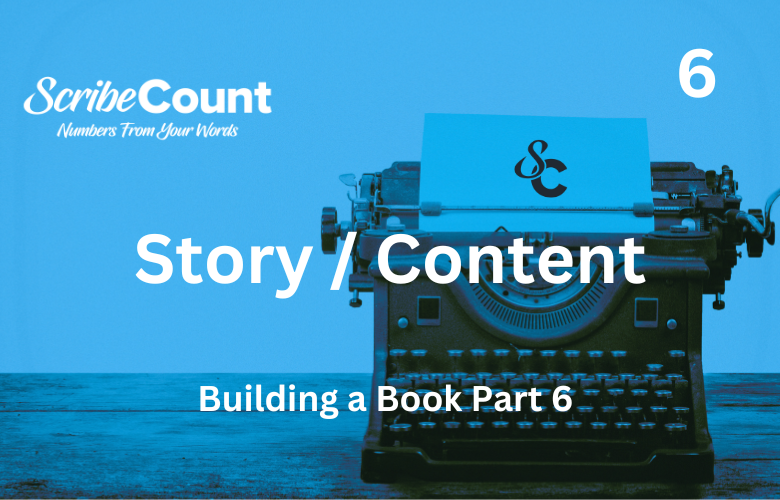How to Construct and Place a Book's Main Story When Building a File for Publishing
When it comes to preparing a manuscript for publishing, ensuring that your book’s story is properly constructed and formatted is crucial. Formatting isn't merely about aesthetics; it plays an essential role in readability and professionalism. A well-formatted book reflects an author's dedication to their craft and ensures that the reader has a smooth, engaging experience. In this article, we’ll cover the best practices for constructing and placing the main story in your book file, including guidance on starting and ending chapters, where to place chapter numbers, titles, and subtitles, drop caps, leading pages, section pages, and the importance of maintaining consistent and proper formatting throughout the document.
Chapter Construction: The Framework of Your Story
The main story of your book is the heart of the manuscript, and how it’s presented on the page will affect how readers experience it. Formatting your chapters properly is the first step toward creating a polished final product. There are several elements involved in chapter construction, from beginning and ending each chapter to numbering and titling them.
Starting a Chapter: First Impressions Matter
The beginning of a chapter is a pivotal point. It should entice the reader to keep going while providing the necessary contextual clues about where they are in the story. Here are the key elements to focus on when starting a chapter:
-
Chapter Heading: This is typically where you’ll find the chapter number and, if applicable, the chapter title. The heading should be visually distinct to help the reader navigate easily through the book. It's common to center the title, making it bold and slightly larger than the body text, and giving the chapter number its own line or placing it above the title in a smaller font. Use proper hierarchy: chapter number larger than the title if the chapter is untitled, and vice versa if there is a specific title.
-
Spacing Before the Chapter: Leave enough space before the start of each chapter, creating a clear distinction between chapters. A good rule of thumb is to add at least two lines of space before the first sentence, although this may vary based on the layout. This extra space provides the reader a visual break between chapters.
-
Opening Paragraph: The first paragraph of the chapter should be impactful and set the tone for what’s to come. Avoid long, dense paragraphs at the beginning of a chapter. The first few lines should grab the reader’s attention, especially if you're writing fiction. In non-fiction, aim to provide a clear roadmap of what the reader will learn or experience in the upcoming section.
Ending a Chapter: Leaving the Reader Wanting More
Just as the opening of a chapter sets the tone, the ending should leave the reader intrigued enough to continue. How you end your chapters plays a huge role in pacing and overall story flow. Here’s what to consider:
-
Cliffhangers: These are often used in fiction to build suspense and keep readers engaged. Ending a chapter with a cliffhanger can create a sense of urgency and excitement, motivating readers to turn the page and start the next chapter.
-
Concluding Thoughts: Non-fiction books often benefit from a conclusion or summary at the end of each chapter. This gives readers a moment to digest the information and provides a sense of closure before moving on to the next topic.
-
Whitespace Before the Next Chapter: Like with the start of a chapter, it’s important to leave adequate space between the end of one chapter and the beginning of the next. This creates a visual break for the reader and signals the end of one section before beginning the next. Be sure to leave a few lines or more between the end of a chapter and the chapter number of the next.
Chapter Numbers, Titles, and Subtitles: Providing Structure
Clear and logical structuring of chapter numbers and titles ensures that your reader can easily navigate your book. In professional books, these elements are meticulously formatted and placed. Here’s how to properly construct and place chapter numbers, titles, and subtitles:
-
Chapter Numbers: Chapter numbers are generally placed at the beginning of each chapter. It’s important to ensure that they’re easily visible and formatted consistently across the manuscript. Numbers are usually centered or aligned to the left of the page, and the font size should be distinct enough to stand out, but not so large that it overpowers the title.
-
Chapter Titles: If your chapters have titles, these should come immediately after the chapter number. If no title is provided, the chapter number is often the only thing listed. Ensure consistency in font style and size throughout the entire manuscript.
-
Subtitles: Some chapters, especially in non-fiction, may have subtitles to further clarify the chapter's focus. These should be placed directly under the main title or chapter heading. They should be smaller than the chapter title but larger than the body text to differentiate them from the content that follows.
Formatting the Story: Drop Caps, Leading Pages, Section Pages
Good formatting doesn't stop with chapter headings. It extends to the overall visual structure of the manuscript and ensures that the reader’s experience remains seamless and engaging.
Drop Caps: A Touch of Elegance
Drop caps are decorative capital letters that appear at the start of a chapter or section, often taking up two or more lines of space. They provide a visual cue that signals the beginning of something new. Drop caps are not essential to every book but can add sophistication and style to your story.
When using drop caps, make sure:
- Consistency: If you choose to use drop caps, make sure they appear at the start of each chapter or section, maintaining a uniform style across the manuscript.
- Proper Size: Drop caps should be large enough to draw attention but not so large that they dominate the page. Typically, the letter should be 3–5 lines tall, depending on the font size.
- Font Style: Use a serif font for drop caps to give them a more traditional and elegant appearance. Avoid overly stylized or complex fonts that can make them hard to read.
Leading Pages: The First Page of Each Chapter
Leading pages are the pages at the beginning of each chapter that contain introductory text or chapter-specific information. These pages typically feature the chapter number and title, but no content is provided on these pages. Leading pages can be used to create an additional sense of anticipation before delving into the content.
Best practices for leading pages:
- Design: The first page of each chapter should ideally feature a full-page design, which includes the chapter number, title, and sometimes an illustration or design element. Keep the design simple and aligned with the overall book style.
- Spacing: Ensure the leading page has sufficient white space around the title and chapter number, allowing the text to breathe without feeling cramped.
Section Pages: Dividing Your Story into Logical Parts
If your book is divided into sections (for instance, in non-fiction books that cover multiple topics or in fiction books with distinct story arcs), section pages should be included. Section pages are a great way to break up longer chapters into more manageable parts.
On a section page, you typically:
- Display the section title prominently.
- Give it enough space around the title so it stands out.
- Ensure consistent placement of the title or subtitle across all section pages.
Ensuring Consistency and Proper Formatting
Consistency in formatting is key to ensuring that your book looks professional. Here are several areas where attention to detail makes a significant difference:
-
Font Style and Size: Choose readable fonts for the body of your text and stick with it throughout the manuscript. Common fonts for book manuscripts include Times New Roman, Garamond, or Georgia, all of which are easy on the eyes and work well for both print and digital formats.
-
Line Spacing: For readability, use 1.5 or double line spacing throughout the manuscript. This ensures there’s enough space between the lines for the reader to follow the text easily.
-
Margins: Standard margins for a manuscript are generally 1 inch on all sides. For books, particularly print editions, the gutter (the inner margin) may need to be slightly wider to account for the binding.
-
Page Numbers: Page numbers should be placed consistently throughout the manuscript. Typically, they’re placed in the footer (at the bottom of the page), but some authors prefer them at the top. Ensure that page numbering starts after the front matter, typically on the first page of Chapter 1.
Final Thoughts: The Importance of Good Formatting
Formatting might seem like a small detail in the grand scheme of writing, but it plays a crucial role in how your book is perceived. Poor formatting can lead to a frustrating reading experience, detracting from the overall enjoyment of your work. Good formatting, on the other hand, can elevate your book, making it more polished and professional.
Whether you’re using a DIY tool, hiring a professional formatter, or doing it yourself in programs like Microsoft Word or Scrivener, ensure that you follow best practices for chapter construction, titles, subtitles, spacing, and overall presentation. A well-formatted manuscript not only makes for a better reading experience but also helps ensure that your work gets noticed in the competitive publishing landscape.

